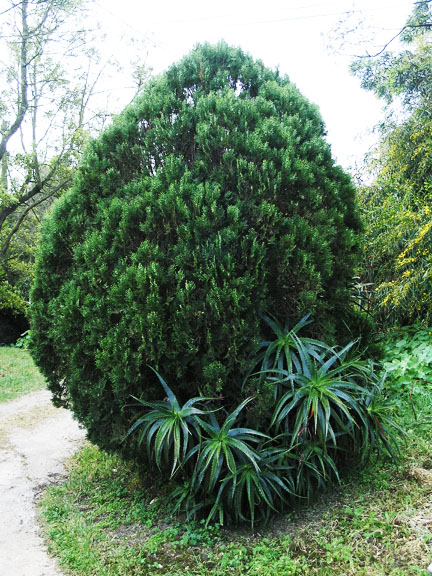
Woody > Platycladus > Platycladus orientalis > Platycladus orientalis
Platycladus orientalis
Oriental Arborvitae, Oriental Cedar
Origin: China, introduced before 1737.
Mike's
Opinion


"
An elegant plant used as a hedge, or as a solitary specimen in the landscape.
Michael Pascoe, NDP., ODH., CLT., MSc. (Plant Conservation)
"
| Family |
| Cupressaceae |
| Genus |
| Platycladus |
| Species |
| orientalis |
| Category |
| Woody |
| Type |
| Tree (evergreen) |
| Synonyms |
| Thuja orientalis |
| Pronunciation |
| USDA Hardiness Zone |
| 6-11 |
| Canadian Hardiness Zone |
| 6 |
| RHS Hardiness Zone |
| H7 |
| Temperature (°C) |
| -23 to -26 |
| Temperature (°F) |
| 0 to -10 |
| Height |
| 5 - 8 m |
| Spread |
| 3 - 5 m |
Photographs
Description and Growing Information
Flowering Period
| General Description |
| Transplants well, tolerant of most conditions, except for boggy sites. Best in full sun, tolerates some shade. Not to be planted where it will be exposed to winter wind; it is pH adaptable. |
| Landscape |
| Suited to hedging, where it produces a dense form when clipped. It can be used also as an evergreen accent either clipped or left slightly informal.It unlike, its cousin Thuja occidentalis will regenerate from old wood permitting the renovation of old hedges. |
| Cultivation |
| Easily transplanted, produces seed freely in cultivation, prefers a moist loamy soil, and grows best on freely draining sites. |
| Shape |
| Dense, conical shape. |
| Growth |
| Slow |
| ID Characteristic |
| Bruised leaves emit an odour, branchlets arranged in a vertical pattern. Hard horn-like cones. It tends to keep its green colour in winter. Shredding gray-brown bark. There is a distinct groove on the back of scales. |
| Pests |
| Bagworm, spider mites and canker. |
| Habitat |
| Steep dry rocky valley slopes, moist, well drained soils, Korea and China. |
| Bark/Stem Description |
| Shredding and brown to grey-brown in colour. |
| Leaf Description |
| Smaller than those of other species, distinctly grooved on the back, those on main axis about 1.25 cm long, triangular, ending in a blunt point. |
| Flower Description |
| Monoecious, terminal, solitary. |
| Fruit Description |
| Cones roundish egg-shaped, 2 cm long, fleshy, bluish before ripening, scales usually 6 ovate, medium brown colour. |
| Colour Description |
| Bright yellow-green to grass-green in youth, darker green when older. |
| Texture Description |
| Medium-fine. |
| Propagation |
| Seed germination is relatively easy. Stratification of seeds for 60 days at about 4°C may be helpful. It may also be propagated by cuttings. |

.jpg)